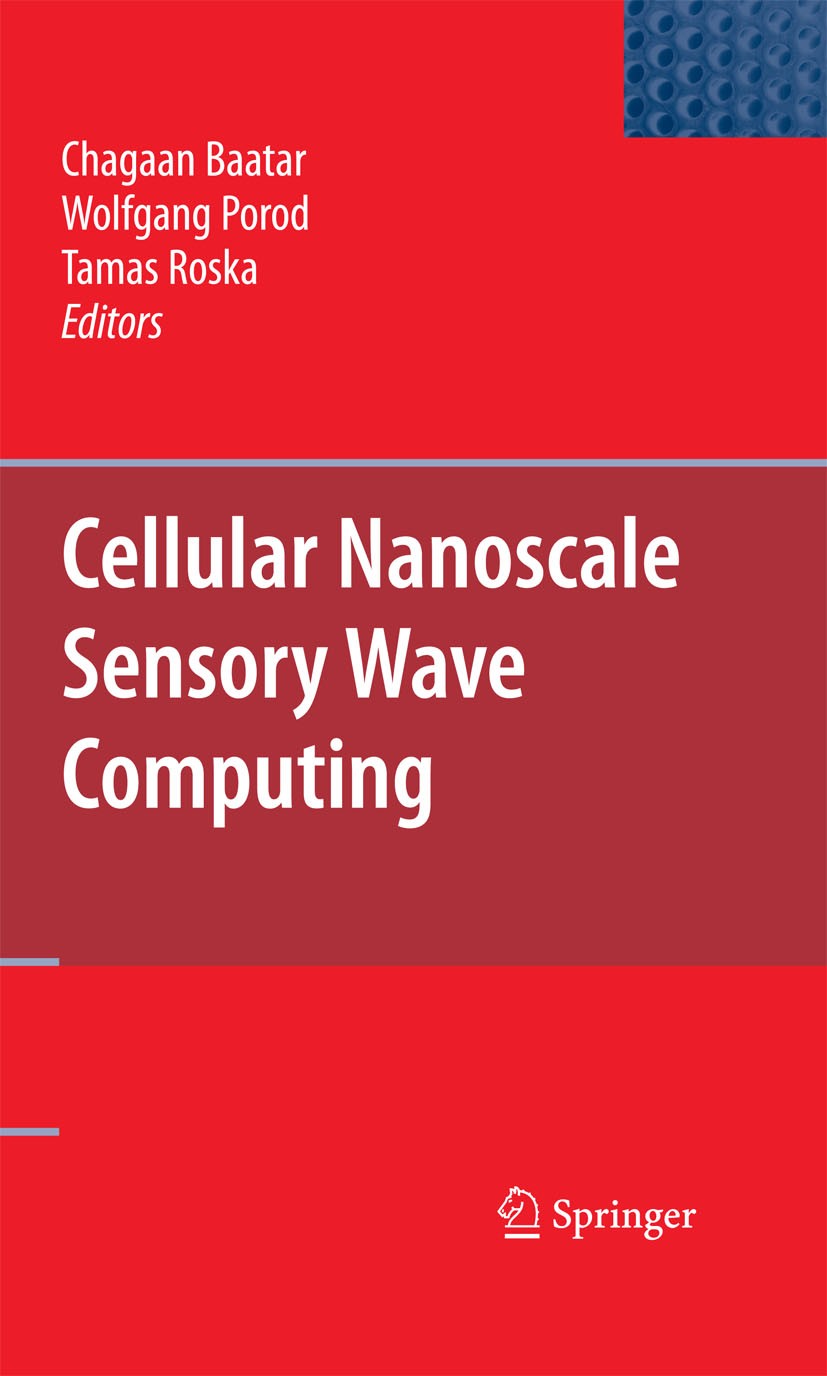| 书目名称 | Cellular Nanoscale Sensory Wave Computing | | 编辑 | Chagaan Baatar,Wolfgang Porod,Tamás Roska | | 视频video | http://file.papertrans.cn/224/223047/223047.mp4 | | 概述 | Discusses the combination of sensing and computation on a single chip, particularly an entire vision system on a chip.Addresses the cellular wave computing concept and architecture in regards to emerg | | 图书封面 |  | | 描述 | This book is loosely based on a Multidisciplinary University Research Initiative (MURI) project and a few supplemental projects sponsored by the Of?ce of Naval Research (ONR) during the time frame of 2004–2009. The initial technical scope and vision of the MURI project was formulated by Drs. Larry Cooper and Joel Davis, both program of?cers at ONR at the time. The unifying theme of this MURI project and its companionefforts is the concept of cellular nonlinear/neuralnetwork (CNN) technology and its various extensions and chip implementations, including nanoscale sensors and the broadening ?eld of cellular wave computing. In recent years, CNN-based vision system drew much attention from vision scientists to device technologists and computer architects. Due to its early - plementation in a two-dimensional (2D) topography, it found success in early vision technologyapplications, such as focal-plane arrays, locally adaptable sensor/ processor integration, resulting in extremely high frame rates of 10,000 frames per second. More recently it drew increasing attention from computer architects, due to its intrinsic local interconnect architecture and parallel processing paradigm. As a resu | | 出版日期 | Book 2010 | | 关键词 | CMOS; Cellular Wave Computing; Memristor; Morphic cellular wave computers; Sensor; System level programma | | 版次 | 1 | | doi | https://doi.org/10.1007/978-1-4419-1011-0 | | isbn_softcover | 978-1-4899-8453-1 | | isbn_ebook | 978-1-4419-1011-0 | | copyright | Springer-Verlag US 2010 |
The information of publication is updating

|
|
 |Archiver|手机版|小黑屋|
派博传思国际
( 京公网安备110108008328)
GMT+8, 2025-11-17 00:23
|Archiver|手机版|小黑屋|
派博传思国际
( 京公网安备110108008328)
GMT+8, 2025-11-17 00:23


